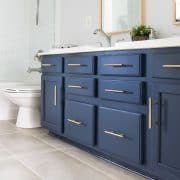How To Paint a Bathroom Cabinet
Paint a bathroom cabinet that looks great and lasts! These durable paints require no-priming so you can paint in three steps.
Yield: 1 cabinet
Cost: $50
Equipment
- Orbital Sander with 120 and maybe 220 grit sandpaper
- Mouse Sander optional - better for corners
- Sanding Blocks
- Paint Tray
- Roller Frame
Materials
- Degreasing Cleaner or TSP
- Sanding sponges 80-100 grit
- Paint's Tape
- Paint brushes see post for recommendations.
- Lint-free microfiber rollers
- Paint See my favorites to use in Notes
- Protective Top Coat Optional, but recommended.
- Stir sticks
- Something to prop up the doors/drawers for drying I use solo cups.
Instructions
- Prep the Vanity. Remove the hardware as well as the doors and drawers. Clean all surfaces using a degreasing cleaner. If you need something stronger, you can use TSP for getting grime and dirt off. Repair scratches with wood filler as necessary.
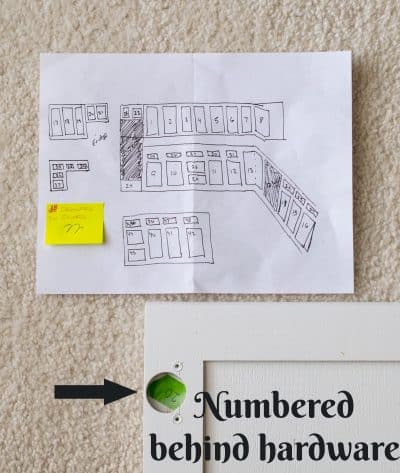
- Sand the surface. Sand enough to remove any sheen or gloss. An orbital sander with 100-120 grit makes the sanding much easier. 120 grit can be used for hand sanding any corners.
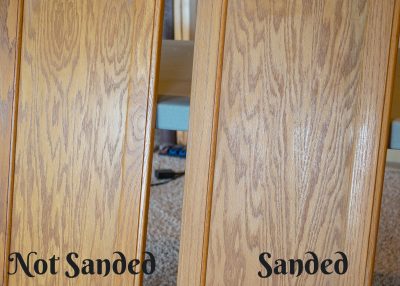
- Prepare your paint space. Tape off any edges you don't want painted such as under countertops or walls. For doors and drawer fronts, I allow them to dry on top of solo cups so they don't touch anything. If I left the drawers fronts on the drawers, it is fine to carefully put them in the vanity in open position to dry.
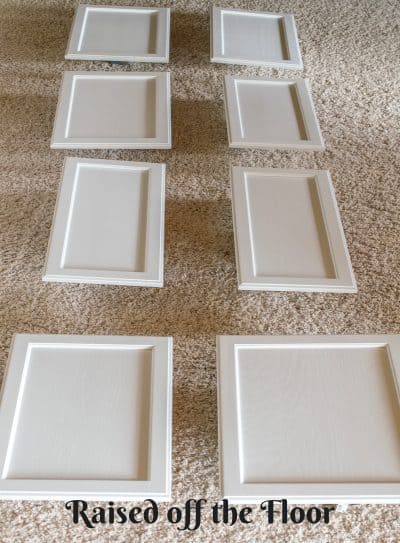
- Paint. See my notes below to decide if you need to prime first. Because these are small projects, we brush the details and then roll the large flat surfaces. Brush with the grain and always from one end to the other. If paint starts to dry, don't go back over it. Finish them off with a roller brush before the paint has time to dry for the smoothest finish.
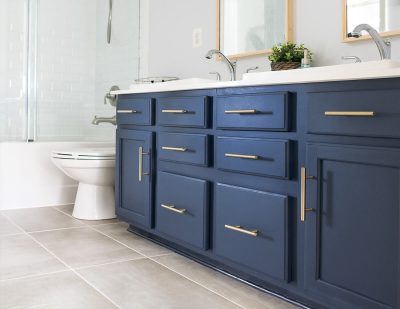
Notes
Do I need to prime before painting?
These instructions are for paints that don't require primer like Fusion Mineral and Benjamin Moore Advance.
There are, however, a few situations that I would still use a high-quality stainblocking primer even with these paints:
- Painting over dark cabinets with a light or white color
- Oak Cabinets that have bad stains stains like deeply embedded oil or markers.
- Cabinets with knots in the wood such as knotty pine.
- Raw or unfinished wood.
